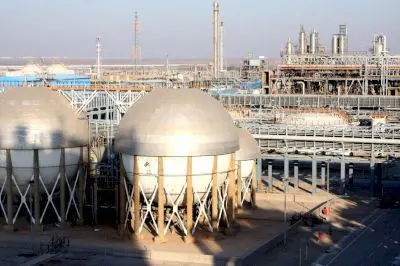To carry chlorine-containing capsules, an Overhead crane and appropriate equipment must be used, and also storage tanks must be stored in a special room equipped with a leak detector

Chlorine is most commonly encountered as a gas. At room temperature and standard atmospheric pressure, Chlorine exists as a yellow-green gas (Cl2). It has a pungent odor and is highly reactive. Chlorine can be liquefied under specific conditions. At temperatures below -34.04 degrees Celsius (-29.27 degrees Fahrenheit) and at atmospheric pressure, chlorine gas condenses into a liquid state. Chlorine liquid is Amber in color and has a density greater than that of water. Chlorine can also form a solid state under very low temperatures. At temperatures below -101.5 degrees Celsius (-150.7 degrees Fahrenheit), chlorine gas solidifies into a yellow crystalline solid. However, chlorine's solid state is less common and not typically encountered under normal conditions.
Chlorine gas is the most commonly used form due to its ease of handling and application. It is readily available and can be easily distributed and controlled. Chlorine gas is commonly used for water disinfection, pool sanitation, and various industrial processes. However, it requires proper safety measures and careful handling due to its toxic and reactive nature. Chlorine liquid has a higher density than its gaseous form and can be useful in certain applications where a higher concentration of chlorine is required. It can be stored and transported in liquid containers. However, handling liquid chlorine requires additional precautions, as it can be corrosive and pose safety risks. Chlorine as a solid is less commonly encountered and has limited practical applications. It is typically used in specialized laboratories or research settings. Handling solid chlorine requires extremely low temperatures and specialized equipment.
- Solid chlorine
Solid chlorine is mostly in powder form and is used to disinfect kitchens, bathrooms, toilets and doing laundry in laundries. This type is also suitable and used for water purification and disinfection, as well as disinfection of swimming pools and water parks. - Liquid chlorine
Liquid chlorine is the most widely used form of chlorine and is transported by special tanks in iron cylinders. This type is mostly used to disinfect swimming pools. Liquid chlorine enters the pool water little by little using injection pumps and eliminates all bacteria and germs inside it.
One of the disadvantages liquid form of this substance is that it loses its properties over a long period of time and is difficult to maintain. It also reacts quickly with acids and most chemicals. - Chlorine Gas
Chlorine gas, if combined with water, increases its acidity. Chlorine in the form of gas is stored and used in pressurized storage tanks and capsules. Each capsule containing chlorine gas is used up to six months, so it is very cost-effective.
One of the disadvantages of this type of chlorine is that there is a possibility of leakage from the capsule and this is very dangerous. To carry chlorine-containing capsules, an Overhead crane and appropriate equipment must be used, and also storage tanks must be stored in a special room equipped with a leak detector. Chlorine as a solid is not encountered in regular conditions but can exist at extremely low temperatures and is a yellow crystalline substance formed when chlorine gas is cooled below its freezing point (-101.5 degrees Celsius or -150.7 degrees Fahrenheit). It is highly reactive and unstable, requiring specialized equipment and controlled environments for handling and is typically utilized in research laboratories or specific experimental setups. Due to its rarity and challenges associated with handling, solid chlorine is not commonly used in practical applications.
Chlorine liquid is the result of condensing chlorine gas under specific temperature and pressure conditions and appears as an amber-colored liquid with a higher density than water. Liquid chlorine is commonly used in large-scale applications where higher concentrations of chlorine are required, such as water treatment plants and industrial settings and is typically stored and transported in sealed containers made of materials resistant to chlorine's corrosive properties. Specialized equipment, such as storage tanks and pumps, is necessary for handling liquid chlorine safely.
Chlorine gas (Cl2) is the most common and widely used form of chlorine and is typically stored and transported in pressurized cylinders or tanks. Chlorine gas is highly reactive and can readily mix with air, making it potentially hazardous if not handled properly and has a characteristic pungent odor, detectable even at low concentrations. Chlorine gas is used for water disinfection, pool sanitation, industrial processes, and Chemical manufacturing. Safety precautions, such as proper ventilation and the use of personal protective equipment, are essential when working with chlorine gas.





